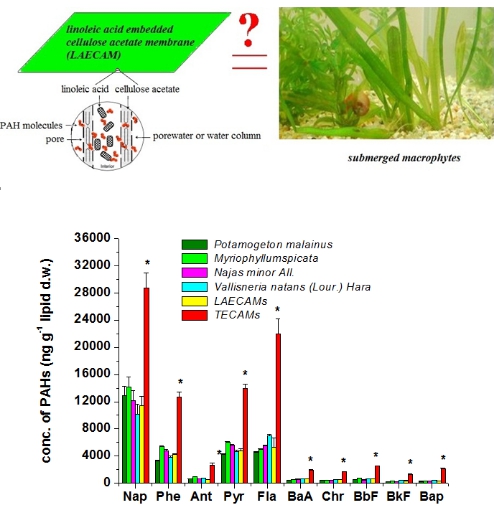Progress in POPs In-situ Bionic Passive Sampling Technique and Biological Availability Research.
POPs pollution is one of the major environmental problems threatening numerous lakes both in China and abroad. Various circles of society have attached close attention to POPs in lakes as it is a carcinogenic and mutagenic hazard. POPs in lakes may be enriched by primary producers, and then passed into food chain and accumulated and boosted in high nutritive organism, thus potentially threatening the lake ecosystem and human health. It is difficult to carry out the assessment on the ecological risks and the hazards to human health due to the lack of POPs data in organism at various sample points, while the in-situ bionic passive sampling technique can make up for this deficiency. Submerged macrophytes are important primary producers in lake ecosystem and a natural media for in-situ monitoring of POPs. However, owing to the impact by lake eutrophication, submerged macrophytes have disappeared in a great number of lakes or bays. Therefore, it is essential to develop an in-situ bionic passive sampling technique in replacement of aquatic plants to acquire and monitor POPs in lakes, thus providing a technical support to ecological risk assessment of POPs in eutrophic and heavily polluted lakes.
With the support by National Natural Science Foundation Program “Research & Development of Linoleic Acid Embedded Cellulose Acetate Membrane Device and Its Application to In-situ Monitoring of Organic Pollutant in Lake Source and Biological Availability Research” (21121107118) and the young scientist group with Nanjing Institute of Geography & Limnology, CAS, the associate research fellow Tao Yuqiang with Nanjing Institute of Geography & Limnology, CAS is the first ever in the world to apply the passive sampling technique to assessing POPs influence on biological availability and aging of terrestrial plants(Environ. Sci. Technol., 2012; Water Res., 2008; J. Agric. Food Chem., 2008). He is also the first one in the world to develop a neo-type linoleic acid embedded cellulose acetate membrane device by extracting, separating and purifying the fat in typical submerged macrophytes in China’s fresh water lake and utilizing asymmetric-phase conversion coating method. Through comparing with the chemical extraction method widely used in the world, the commercialized glycerol trioleate semipermeable membrane devices and the enrichment of Xuanwu Lake in-situ submerged plants, and combined with water temperature correction, this sampling device has been successfully applied to in-situ sampling of polycyclic aromatic hydrocarbon in the sediment pore water of Taihu Lake, and in the water and sediment pore water of Nanjing’s Xuanwu Lake and Yeya Lake in summer and winter, and the enrichment of polycyclic aromatic hydrocarbon in four submerged macrophytes in Xuanwu Lake has been successfully predicted, thus providing a new technology for in-situ monitoring of POPs, biological availability research and ecological risk assessment. Relevant research finding has been carried on the top journal in environmental science and engineering field, Environmental Science and Technology. (Yuqiang Tao, Bin Xue, Shuchun Yao. Using linoleic acid embedded cellulose acetate membranes to in situ monitor PAHs in lakes and predict their bioavailability to submerged macrophytes. Environmental Science and Technology, 2015, 49, 6077-6084, For original text, link to http://pubs.acs.org/doi/abs/10.1021/acs.est.5b00863) , authorized with the state invention patent and patent for utility models (ZL201210427132.3 and ZL 2012 2 0567108.5).

